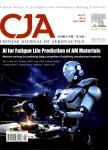Frequency steering of spaceborne clocks based on XPNAV-1 observations
作者机构:National Time Service CenterChinese Academy of SciencesXi'an 710600China Schoolof Astronomy and Space ScienceUniversity of Chinese Academy of SciencesBejing 100049China Beijing Institute of Control EngineeringBeijing 100190China
出 版 物:《Chinese Journal of Aeronautics》 (中国航空学报(英文版))
年 卷 期:2023年第36卷第6期
页 面:266-278页
核心收录:
学科分类:07[理学] 08[工学] 081105[工学-导航、制导与控制] 070402[理学-天体测量与天体力学] 0704[理学-天文学] 0811[工学-控制科学与工程]
基 金:supported by the National SKA Program of China(No.2020SKA0120103) the National Natural Science Foundation of China(Nos.U1831130 and U1531112)
主 题:Pulsar time scale Pulsar timing Atomic clock Frequency steering X-ray observation
摘 要:Due to high stable rotations, timing of pulsars provides a natural tool to correct the frequency deviation of spaceborne atomic clocks. Based on processing the observational data about a year of Crab pulsar given by XPNAV-1 satellite, we study the possibility of correcting the frequency deviation of spaceborne atomic clocks using pulsar timing. According to the observational data in X-ray band and the timing model parameters from radio observations, the pre-fit timing residuals with a level of 67.66 μs are obtained. By fitting the slope of the timing residuals affected by the faked frequency-biased reference clock, we estimated successfully the relative frequency deviation of the reference clock. For a satellite clock with frequency deviation of the order about 10^(-12), a calibration accuracy with relative error of about 2% can be obtained from the Crab pulsar’s data for one *** stability of the time scale based on Crab pulsar is about 10^(-12) for an interval of one year.



